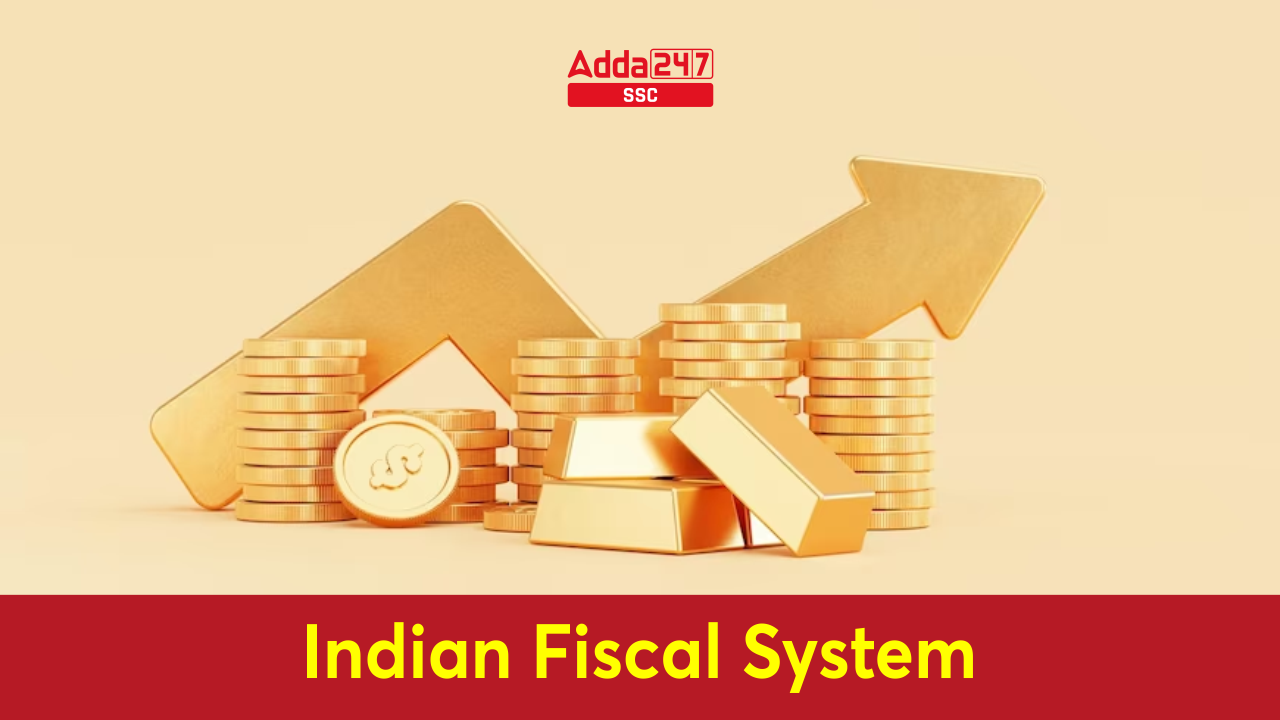Indian Fiscal System
Recently, India became the 5th largest economy in the world by overtaking United Kingdom’s Economic and is believed to enter into the list of the world’s 3rd largest economies by 2029. But how does India manages its economy? What are the factors that contribute to India’s growing economy and how does the government of India plans to strengthen the economy? All of these are discussed in the Indian Fiscal Policy.
The Indian Fiscal Policy is a guiding light for the Government of India by which it plans and strategizes how much revenue they need to generate for the smooth functioning of the economy, what would be their sources of income, how they will spend the money in different sectors as per the needs and demand. In simple terms, Fiscal Policy is the policy by which the government manages its finances, taxes, and expenditure.
What is Fiscal System?
The term Fiscal is derived from the word ‘fisk’ which means public treasury or government funds. Fiscal Policy is an instrument that deals with taxation, public borrowing, and spending used by the government of a country to ensure a smooth and streamlined economy and regulate the country’s economic growth.
Categories of Fiscal Policy
The Fiscal System is divided into three categories:
- Neutral Fiscal Policy- where government spending is equal to taxation.
- Expansionary Fiscal Policy- where the government spending is more than the taxation.
- Contractionary Fiscal Policy- where the government spending is less than the taxation.
Components of Fiscal Policy
There are three components of Fiscal Policy:
- Government Receipts
The earnings of the government through taxes, investments, interests, and the services rendered, cess, etc. are known as Government Receipts. It is further divided into two categories- Capital Receipts and Revenue Receipts.
- Government Expenditure
Government Expenditure is the purchase of goods and services by the govt. of India. It can be categorized into two categories- Revenue Expenditure which is a recurring expenditure and Capital Expenditure which is a non-recurring expenditure.
- Public Accounts of India
Constituted under Article 266 of the constitution, the Public Accounts of India include the flow of transactions where the Government of India is a Banker. Example- Provident Funds.
Fiscal Policy in India
Indian Fiscal System based on the constitution of India is Federal in nature and is separated between the center and the state. Article 112 of the constitution mandates the present government to present an annual financial statement before both houses of the parliament. The Indian Fiscal Year begins on the 1st of April and ends on the 31st of March every year. The Finance Minister of India along with other experts prepares the Fiscal Policy in India. In the Fiscal Policy, the Finance Minister reviews the performance of the government’s revenue, budgeting, taxation, government borrowings, public borrowings, expenditure, and other financial regulations of the current fiscal year. And then sets out the goals and objectives for the next fiscal year.
Indian Fiscal System: Fiscal Responsibility and Budget Management (FRBM) Act
The Fiscal Responsibility and Budget Management (FRBM) Act was introduced by our former prime minister, Mr. Atal Bihari Vajpayee as a bill, and was passed in parliament in 2003. The Act focuses on imposing fiscal discipline on the government to effectively manage public funds, reduce the fiscal deficit, and improve fiscal prudence.
Debt V/s Deficit
Let’s understand the difference between debt and deficit.
| Debt | Deficit |
| Debt is the amount of money owed to someone else. It is an outstanding stock issued by the government in the past and has not been paid yet | The deficit is the amount of money added to the current debt during a particular time period |
| Debt is not an indicator of a negative economy | Deficit refers to negative money taken over the course of time |
Indian Fiscal System: Important Tools
The important tools of the Indian Fiscal System are:
- Government Bonds- Bonds issued by the government of India to ensure safe investments. Like- Municipal Bonds, Treasury Bills, etc.
- NRI Bonds- Released in 1998 and 2000 to aid the rupee depreciation, the Reserve Bank of India (RBI) issues bonds to non-resident Indians who want to invest their money in India.
- Masala Bonds- Introduced by the International Finance Corporation (IFC), masala bonds are rupee-denominated bonds issued by Indian entities outside India. Thus strengthening the domestic bonds.
Indian Fiscal System: Goals & Objectives
We have discussed a lot about the Indian Fiscal System and its various components. Now, we will be discussing in detail the necessity and importance of the Indian Fiscal System.
- To ensure full employment- One of the prime objectives of the Indian Fiscal System should be promoting and attaining complete employment. Government should interest more in sectors that would generate employment opportunities. Apart from investing, the government should also think about other measures like providing subsidies and low-interest rates to small-scale industries to help them sustain and employ more people.
- Maintain Price Stability- The government should stabilize the prices of various goods and services by taking regulatory measures.
- Promote Economic Growth- In an economically developing country like India, the Fiscal Policy helps in strengthening and stabilizing the economy. The Indian Fiscal System should focus on all aspects of the economy like building infrastructure, promoting education and health, providing employment, controlling and building measures to control inflation, avoiding the deficit of money, and maintaining the value of money.
A systemically planned Indian Fiscal System would result in economic growth and protect the country from conditions like inflation, recession, and fiscal deficit. We hope this article will be helpful and informative for the candidates.




 Top 10 Longest Rivers in India, Largest ...
Top 10 Longest Rivers in India, Largest ...
 Mughal Empire Notes For RRB NTPC Exam 20...
Mughal Empire Notes For RRB NTPC Exam 20...
 Longitude and Latitude of India - Defini...
Longitude and Latitude of India - Defini...


